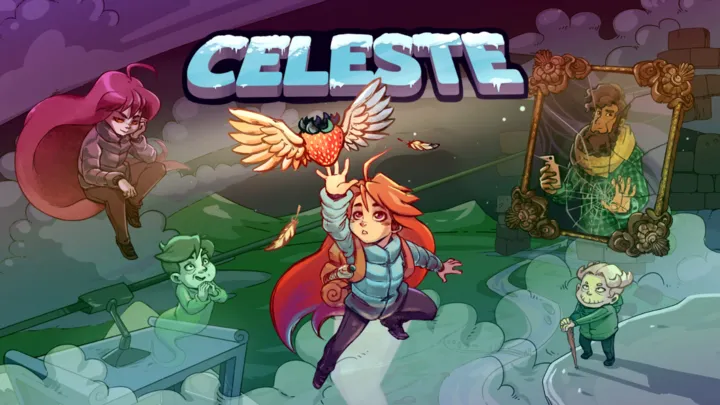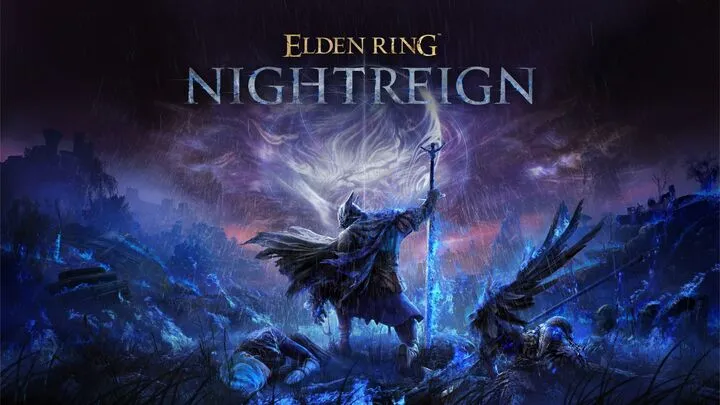Introduction
Zoonomaly is more than a survival horror game—it is a layered psychological and narrative experience that challenges players not only to survive, but also to uncover the dark truths buried within its world. While many players focus on stealth, resource management, and avoiding the relentless anomalies, others are drawn to the mystery beneath the surface. Why do the anomalies exist? What is the origin of the facility? And what secrets lie hidden in the abandoned laboratories, cryptic journals, and subtle environmental storytelling?
This guide is a comprehensive deep dive into the lore and secrets of Zoonomaly. It is intended for players who wish to go beyond mere survival and immerse themselves in the chilling mythology of the game. By analyzing hidden texts, environmental clues, and enemy behavior, we will piece together a narrative that explains not just how to survive in Zoonomaly, but also why this world exists as it does.
1. The Origins of the Facility

One of the first mysteries Zoonomaly presents is the abandoned facility where the anomalies roam. Players entering the early levels encounter rusted hallways, broken machinery, and signs of rapid evacuation. Environmental storytelling suggests the facility was not simply a laboratory, but a sprawling complex where biological and psychological experiments were conducted.
Scattered documents hint at a corporation or government entity behind the research. References to “Project Epoch” appear repeatedly, though never fully explained. Some players interpret this as a project to manipulate time perception, while others see it as an attempt to weaponize altered consciousness. Whatever its true nature, the experiments led to catastrophic breaches, and the anomalies are likely byproducts of these failed trials.
The facility’s design reinforces its history. Areas shift between clinical laboratories and surreal, distorted spaces, suggesting reality itself has been warped. This environmental instability hints that the facility’s experiments did not just fail—they tore holes in the nature of perception and being.
2. The Birth of the Anomalies
The anomalies themselves are central to Zoonomaly’s lore. They are not simply monsters; they are reflections of human fears, traumas, and twisted experiments. Their erratic movements and adaptive intelligence suggest they are more than physical entities—they embody psychological constructs given form.
Some anomalies resemble distorted human figures, while others are abstract, shifting masses of limbs and shadows. Environmental logs imply these beings were once test subjects exposed to prolonged sensory deprivation, psychological conditioning, and experimental neurochemicals. The phrase “fear externalized” appears in one corrupted audio log, suggesting the anomalies are literal manifestations of human terror.
The most chilling aspect of anomaly lore is that they are drawn to players not only by sound or light, but also by fear. Subtle mechanics imply that panicking makes you easier to detect. This is not just gameplay design—it ties into the idea that anomalies feed on psychological vulnerability.
3. The Role of the Protagonist
Who exactly is the player character in Zoonomaly? The game offers no explicit backstory, but fragments of information suggest you are not merely a survivor stumbling into the facility. Hints point to your character being a test subject, a researcher, or perhaps someone tied directly to “Project Epoch.”
Scraps of notes and whispered dialogue sometimes refer to “Subject 13,” a designation that may be linked to the player. If true, this means your journey through the facility is not random—it is a designed test, perhaps an endless loop meant to evaluate human responses to anomalous conditions.
The protagonist’s lack of identity is deliberate. By keeping the player unnamed and faceless, Zoonomaly reinforces its theme of dehumanization. You are not an individual in the eyes of the facility—you are data. This theme becomes more unsettling the deeper you explore.
4. Environmental Storytelling and Hidden Details
One of Zoonomaly’s most effective storytelling methods is its environment. Players who rush to escape miss dozens of hidden clues embedded in graffiti, sound design, and visual anomalies. For example:
- Graffiti: Phrases like “We are the experiment” or “The walls remember” appear in unlikely places, hinting at past test subjects attempting to leave warnings.
- Sound cues: Whispers and distorted audio logs sometimes contain reversed dialogue. When reversed manually by players, these reveal fragmented instructions or backstory.
- Architecture: Hallways that repeat endlessly or rooms that subtly shift when re-entered suggest the facility exists partially outside normal reality.
Exploring slowly and observing these elements transforms Zoonomaly from a survival horror into a narrative puzzle. The secrets are never given directly, but the world constantly nudges players toward interpretation.
5. Secret Documents and Logs

Hidden throughout the facility are documents and audio logs that deepen the lore. Unlike typical collectibles, many are deliberately fragmented, forcing players to piece them together. Some key discoveries include:
- Experiment Notes: Records describing early experiments on sensory manipulation, often with subjects reporting hallucinations, paranoia, and eventually physical mutation.
- Incident Reports: Logs that mention “containment failures” but redact critical details, leaving only chilling phrases like “anomaly breach at sector C—total loss.”
- Personal Diaries: A few scattered journals reveal the humanity of the staff, with some scientists expressing regret or fear about their work. These fragments suggest not all researchers agreed with the project’s ethics.
By piecing these together, players uncover that the anomalies were not accidents—they were intentional outcomes, created as part of a larger program.
6. Hidden Rooms and Secret Areas
Zoonomaly rewards exploration with hidden rooms and areas that often contain major lore reveals. These are not marked on maps and often require environmental manipulation, like pushing aside shelves, crawling through vents, or triggering obscure switches.
One such room, nicknamed “The Chamber of Echoes” by the community, contains dozens of tape recorders playing distorted voices simultaneously. When pieced together, these voices form fragments of a coherent message about “the cycle repeating.”
Other hidden areas include laboratories filled with half-destroyed experimental pods, suggesting multiple generations of test subjects. Some rooms are even more abstract—spaces where gravity warps or time loops endlessly. These areas blur the line between physical exploration and psychological descent, emphasizing the theme that the facility is both real and imagined.
7. Symbolism and Thematic Depth
Much of Zoonomaly’s lore is symbolic. The anomalies, facility, and gameplay mechanics mirror psychological states. Common interpretations include:
- Anomalies as Trauma: Each monster embodies specific fears—claustrophobia, paranoia, abandonment—forcing players to confront them.
- Facility as Mindscape: The constantly shifting hallways may represent a fractured psyche, suggesting the player is navigating their own consciousness.
- Survival as Resistance: The act of surviving is symbolic of resisting psychological collapse, reinforcing the theme that mental endurance is as critical as physical survival.
This symbolic depth allows players to project their own interpretations, making the game a mirror of individual fears.
8. Theories About Project Epoch
Among the community, “Project Epoch” has generated endless theories. Some believe it was an attempt to weaponize fear by externalizing it into anomalies. Others argue it was a temporal experiment that fractured reality, trapping subjects in loops.
Evidence supports both interpretations. Logs mention “fear resonance,” a process of amplifying terror into tangible form, while architectural anomalies imply time manipulation. Perhaps both are true: by experimenting on perception, the facility broke the boundaries between thought, time, and matter, producing the anomalies and warping reality simultaneously.
Project Epoch thus represents humanity’s attempt to control the uncontrollable—and its catastrophic failure.
9. Endings and Their Implications
Zoonomaly does not have a single definitive ending; instead, multiple outcomes exist depending on how you play.
- Escape Ending: You find a way out of the facility, only to discover yourself re-entering from another side, suggesting the cycle is endless.
- Assimilation Ending: If you fail certain sanity checks, your character begins to transform, implying you become an anomaly yourself.
- Observer Ending: Rare and hidden, this ending reveals you were part of the research team, testing the anomalies remotely. However, it ends with a glitch, hinting that even observers are not safe.
Each ending reinforces the theme of cycles, perception, and the impossibility of true escape.
10. Community Interpretations and Ongoing Mysteries

Part of what makes Zoonomaly enduring is that it leaves so much unexplained. Players gather online to share interpretations, decode reversed audio, and compare theories. Some believe the anomalies are metaphors for depression and trauma, while others see the entire game as a critique of unethical scientific ambition.
Developers have fueled this speculation by leaving updates with cryptic patch notes, such as “the walls remember more now,” suggesting ongoing mysteries. Whether Zoonomaly will ever provide a definitive canon answer is doubtful, but its strength lies in ambiguity. The mystery is part of the horror.
Conclusion
Zoonomaly is not just a survival horror game—it is an elaborate tapestry of lore, symbolism, and mystery. By exploring its environments, analyzing its documents, and interpreting its monsters, players uncover a narrative that is as unsettling as it is profound. The facility is both a physical place and a metaphorical construct; the anomalies are both creatures and reflections of human fear.
For those who dare to look deeper, Zoonomaly transforms from a tense horror experience into a meditation on trauma, perception, and the consequences of tampering with the unknown. Survival is only the beginning—the true challenge is understanding the story hidden beneath the screams.

















